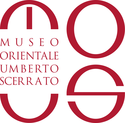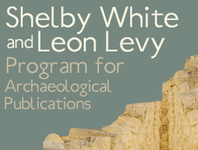Photographs from the archive of the IUO Italian Archaeological Mission to Upper Egypt (1977-1986)
Grazia A Di Pietro, Elena D'Itria, 2019. https://doi.org/10.5284/1056618. How to cite using this DOI
Data copyright © Museo Orientale 'Umberto Scerrato', University of Naples 'L'Orientale' unless otherwise stated
This work is licensed under a Creative Commons Attribution 4.0 International License.
Primary contact
Grazia A
Di Pietro
Naqada Publication Project
Museo Orientale 'Umberto Scerrato'
University of Naples 'L'Orientale'
Via Chiatamone 57-61
80121
Napoli
Italy
Resource identifiers
- ADS Collection: 3508
- DOI:https://doi.org/10.5284/1056618
- How to cite using this DOI
Introduction
The collection of digitised archival photographs presented herein has been generated as part of the 'Naqada Publication Project' (2016–2018). The aim of this project is to produce a comprehensive publication of the results of archaeological investigations conducted by the Italian Archaeological Mission of the then 'Istituto Universitario Orientale', Naples, at the site of Naqada, Egypt, in the late Seventies – early Eighties, under the direction of C. Barocas, R. Fattovich and M. Tosi.

Figure 1 - Northern sector of the terrace of Zawaydah at Naqada, viewed from the NE. To the S of each of the two modern buildings the reed fences erected in the surroundings of the trenches ZWW and ZWE, excavated by the IUO Mission since 1979, are visible.
Naqada, or ancient Nubt, is located in Upper Egypt, approximately 32 km north of Luxor, on the west bank of the Nile. The site is best known for its extensive cemeteries dated to the Predynastic period (c. 4th millennium BC), discovered by W.M. Flinders Petrie at the end of the 19th century. Between 1977 and 1986, archaeological investigations of the Italian expedition focused on the corresponding settlement remains, centered mainly on a gravel terrace (named Zawaydah; Figure 1) at the edge of the low desert, and surrounding areas. Evidence from the settlement at Zawaydah offers a unique glimpse into lifestyle and craft activities, administrative practices and symbolic behaviour, subsistence strategies and the network of connections of its living community in the crucial period of state formation in Egypt.
While results from these field investigations and subsequent research on pertinent archaeological materials are the subject of a number of publications (see: Overview / Bibliography), the photographs documenting the field activities themselves of this expedition have had very limited dissemination so far. These images bear witness to aspects of the site, history and archaeology of Naqada and of other sites in the wider region of Naqada that are barely reflected in other sources and, therefore, they may serve as a resource for further research. In addition, these pictures preserve record of the appearance of several archaeological vestiges in a form that has now vanished—the urban and agricultural expansion having dramatically altered the local landscape over the last decades. Thus, such documents can facilitate diachronic analysis of the conditions of the surviving sites and potentially contribute to heritage management in the Naqada region. With this view and objectives, the archival photos under review have recently been examined, digitised and are being made available via the ADS digital repository.
The 'Naqada Publication Project' has been led and coordinated by Grazia A. Di Pietro (PhD), with Rodolfo Fattovich (Professor, University of Naples 'L'Orientale', Italy, henceforth 'UNO') and Andrea Manzo (Professor in Nubian and Ethiopian Archaeology and Ancient History, UNO) acting as scientific advisors. The project has been hosted by the Oriental Museum 'Umberto Scerrato' at UNO (Director: Professor Lucia Caterina) and made possible through a generous grant from 'The Shelby White and Leon Levy Program for Archaeological Publications' (Harvard University, The Semitic Museum, Cambridge MA, USA). The 'Open Access Archaeology Fund' (Archaeology Data Service/Internet Archaeology, University of York, UK) has provided financial support for the construction of the interface web-page of the present digital archive.







